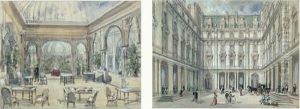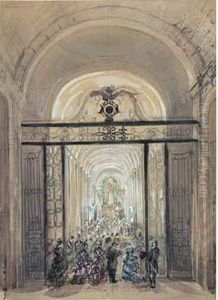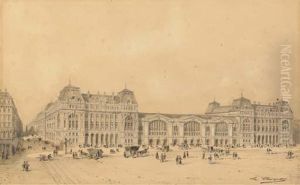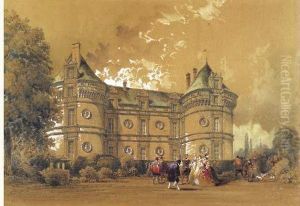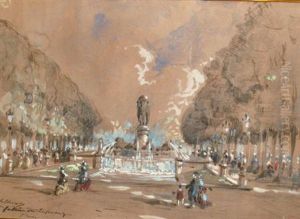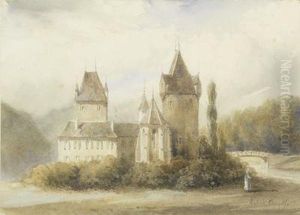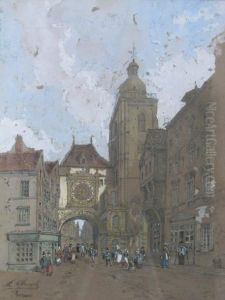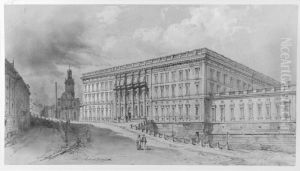Hubert Clerget Paintings
Hubert Clerget was a French painter born on November 25, 1818, in Pusey, Haute-Saône, France. Not to be confused with his son, Hubert Clerget (1855-1927), who was also an artist, the elder Clerget is known for his historical and portrait paintings. During the 19th century, France was a vibrant center for the arts, and Clerget was part of the artistic milieu that was heavily influenced by historical events and the changing trends in art.
Clerget received his artistic training at the École des Beaux-Arts in Paris where he studied under renowned painters such as Paul Delaroche, who was known for his elaborately staged historical scenes. Clerget's style was significantly influenced by the academic art movement of the time, which emphasized formal techniques, precision, and a focus on classical themes.
Throughout his career, Clerget exhibited his works at the Salon, the official art exhibition of the Académie des Beaux-Arts in Paris. His paintings often depicted scenes from French history, with a particular emphasis on the grandeur and drama of the past. He was adept at capturing the essence of the historical narrative, and this made his works popular among patrons who had a strong interest in French heritage and nationalism.
Clerget’s work received recognition and he was awarded medals for his contributions to French art. His paintings can be found in various museums and private collections, showcasing his skill in both portraiture and historical subjects.
The latter years of Clerget's life coincided with a period of transition in the art world, as the Impressionist movement began to take hold. However, Clerget remained committed to the academic style until his death on February 7, 1899, in Paris. His legacy is that of a skilled painter who captured the spirit of 19th-century France through his dedication to historical accuracy and fine craftsmanship. His son, also named Hubert Clerget, carried on the artistic tradition, but he is often distinguished by his work in illustration and architectural painting.
